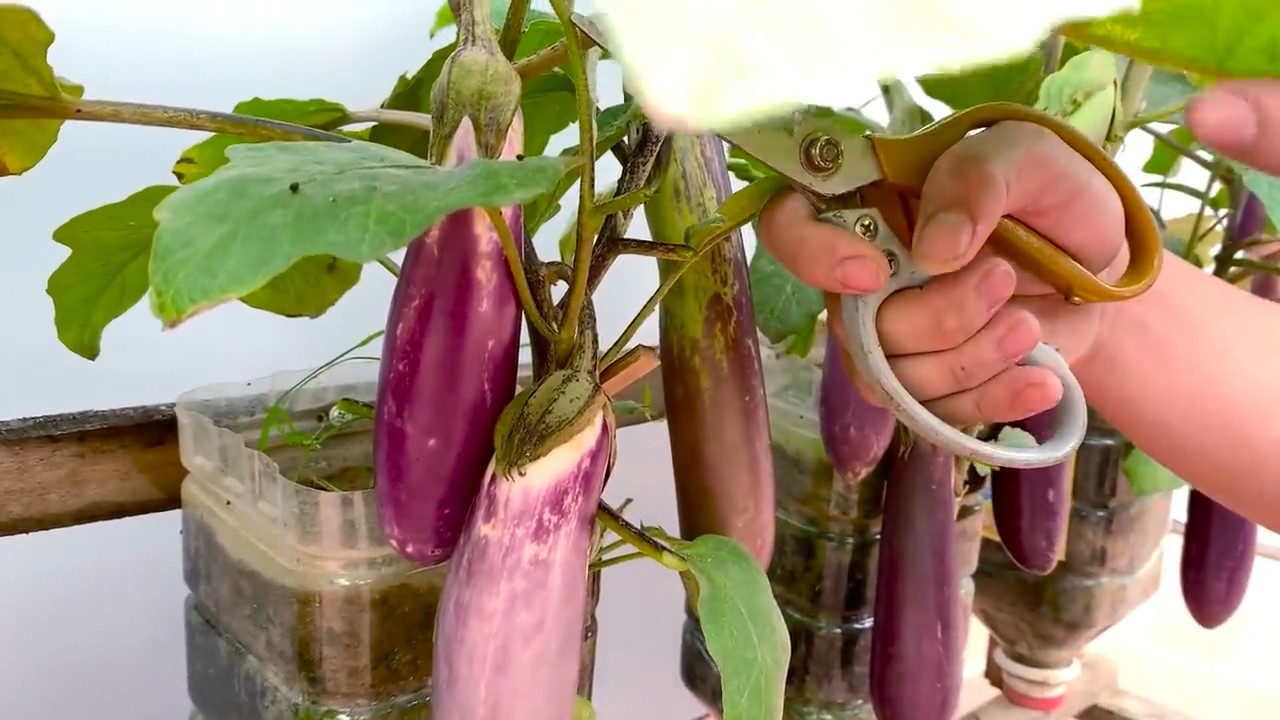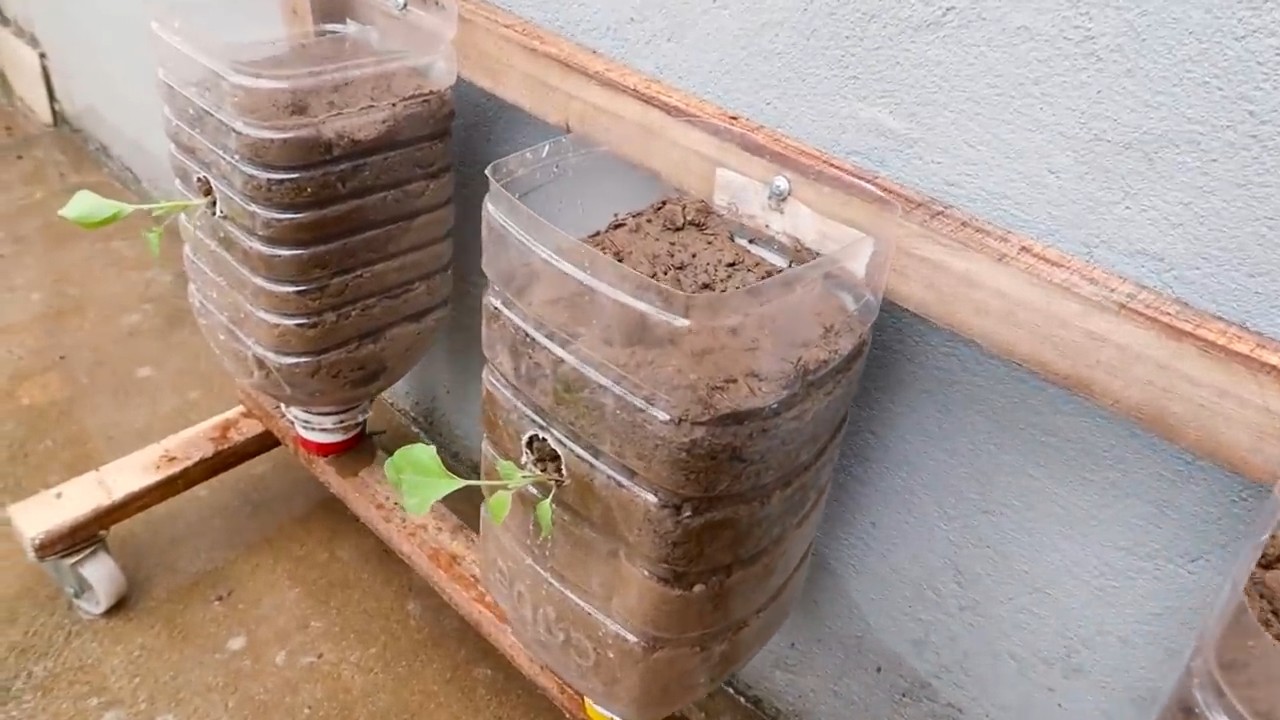Eggplant cooking tips and tricks – ever feel like you’re battling a bitter, spongy beast every time you try to cook eggplant? I get it! For years, I struggled to unlock the delicious potential of this versatile vegetable. Eggplant, also known as aubergine in some parts of the world, has a rich history, dating back thousands of years to its origins in India. It’s been a staple in Mediterranean and Asian cuisines for centuries, celebrated for its unique texture and ability to absorb flavors.
But let’s be honest, mastering eggplant can be tricky. That’s why I’m sharing my tried-and-true eggplant cooking tips and tricks to help you transform this sometimes-challenging ingredient into a culinary masterpiece. Forget the bitterness and sogginess! I’ll guide you through everything from selecting the perfect eggplant at the market to prepping it like a pro and using the best cooking methods to bring out its natural sweetness and creamy texture.
Why do you need these tips? Because perfectly cooked eggplant is a game-changer! It can elevate your vegetarian dishes, add depth to your pasta sauces, and even become the star of the show in dishes like eggplant parmesan or baba ghanoush. So, ditch the frustration and get ready to unlock the full potential of this amazing vegetable. Let’s get cooking!

Unlock Eggplant Nirvana: My Favorite Cooking Tips and Tricks
Okay, eggplant lovers (and soon-to-be eggplant lovers!), let’s dive into the wonderful world of this often-misunderstood vegetable. I’m going to share all my secrets for cooking eggplant perfectly every single time. Forget bitter, spongy messes – we’re aiming for tender, flavorful eggplant that will have you craving more.
Choosing the Perfect Eggplant
Before we even think about cooking, we need to select the right eggplant. Here’s what I look for:
* Firmness: Gently squeeze the eggplant. It should feel firm and slightly heavy for its size. Avoid eggplants that feel soft or squishy, as they’re likely overripe.
* Skin: The skin should be smooth, shiny, and free of blemishes, bruises, or wrinkles. A few minor imperfections are okay, but avoid anything major.
* Stem: The stem should be green and fresh-looking. A dry or brown stem indicates an older eggplant.
* Size: Smaller eggplants tend to be less bitter and have fewer seeds than larger ones. If you’re new to eggplant, start with a smaller variety.
Prepping Your Eggplant: To Salt or Not to Salt?
This is the age-old question, isn’t it? Salting eggplant is a technique used to draw out moisture and reduce bitterness. Here’s my take:
* Why Salt? Salting helps to remove excess water, which can lead to a less spongy texture when cooked. It also helps to concentrate the eggplant’s flavor and reduce any potential bitterness.
* When to Salt: I usually salt eggplant if I’m planning to fry it, grill it, or bake it in a way that I want it to brown nicely. If I’m adding it to a stew or curry where it will be submerged in liquid, I often skip the salting step.
* How to Salt: If you decide to salt, here’s how I do it:
1. Slice or Cube: Cut the eggplant into your desired shape (slices, cubes, etc.).
2. Salt Generously: Place the eggplant in a colander and sprinkle it generously with kosher salt. Make sure to coat all sides.
3. Let it Sit: Place a plate on top of the eggplant and weigh it down with something heavy (like a can of beans). This will help to press out the moisture. Let it sit for at least 30 minutes, or up to an hour.
4. Rinse and Dry: After salting, rinse the eggplant thoroughly under cold water to remove the excess salt. Then, gently squeeze out any remaining moisture with paper towels.
Cooking Methods: My Go-To Techniques
Now for the fun part! Here are my favorite ways to cook eggplant:
Baking Eggplant: Simple and Delicious
Baking is a great way to cook eggplant because it’s relatively hands-off and results in a tender, flavorful dish.
1. Preheat Oven: Preheat your oven to 400°F (200°C).
2. Prepare Eggplant: Slice the eggplant into rounds or cubes. If you’re salting, follow the steps above.
3. Toss with Oil and Seasonings: In a bowl, toss the eggplant with olive oil, salt, pepper, and any other seasonings you like (garlic powder, onion powder, Italian herbs, etc.).
4. Arrange on Baking Sheet: Spread the eggplant in a single layer on a baking sheet lined with parchment paper.
5. Bake: Bake for 20-30 minutes, or until the eggplant is tender and lightly browned, flipping halfway through.
Grilling Eggplant: Smoky Perfection
Grilling eggplant adds a wonderful smoky flavor that’s perfect for summer.
1. Prepare Grill: Preheat your grill to medium heat.
2. Prepare Eggplant: Slice the eggplant into planks or rounds. If you’re salting, follow the steps above.
3. Brush with Oil: Brush both sides of the eggplant with olive oil.
4. Grill: Grill the eggplant for 3-5 minutes per side, or until it’s tender and has grill marks.
5. Season: Season with salt, pepper, and any other desired seasonings.
Frying Eggplant: Crispy and Irresistible
Fried eggplant is a classic for a reason – it’s crispy on the outside and tender on the inside.
1. Prepare Eggplant: Slice the eggplant into rounds. Salting is highly recommended for frying.
2. Prepare Breading (Optional): You can bread the eggplant for extra crispiness. I like to use a mixture of flour, breadcrumbs, and seasonings. Dip the eggplant in flour, then egg, then breadcrumbs.
3. Heat Oil: Heat about 1/2 inch of oil in a large skillet over medium heat.
4. Fry: Fry the eggplant in batches for 2-3 minutes per side, or until golden brown and crispy.
5. Drain: Drain the fried eggplant on paper towels to remove excess oil.
6. Season: Season with salt and any other desired seasonings.
Roasting Eggplant: Intense Flavor
Roasting eggplant at a high temperature brings out its natural sweetness and creates a wonderfully caramelized flavor.
1. Preheat Oven: Preheat your oven to 450°F (232°C).
2. Prepare Eggplant: Cut the eggplant into 1-inch cubes. Salting is optional, but I find it helps with browning.
3. Toss with Oil and Seasonings: In a bowl, toss the eggplant with olive oil, salt, pepper, and any other seasonings you like (garlic, herbs, spices). Don’t be afraid to be generous with the oil – it helps the eggplant caramelize.
4. Arrange on Baking Sheet: Spread the eggplant in a single layer on a baking sheet. Make sure the pieces aren’t overcrowded, as this will steam them instead of roasting them.
5. Roast: Roast for 20-30 minutes, or until the eggplant is tender, deeply browned, and slightly caramelized. Stir halfway through to ensure even cooking.
Sautéing Eggplant: Quick and Easy
Sautéing is a fast and convenient way to cook eggplant, especially for stir-fries or quick weeknight meals.
1. Prepare Eggplant: Cut the eggplant into small cubes or strips. Salting is optional, but it can help prevent the eggplant from becoming too soggy.
2. Heat Oil: Heat a tablespoon or two of oil in a large skillet or wok over medium-high heat.
3. Sauté: Add the eggplant to the skillet and sauté for 5-7 minutes, or until it’s tender and lightly browned. Stir frequently to prevent burning.
4. Season: Season with salt, pepper, and any other desired seasonings or sauces.
Flavor Boosters: My Secret Weapons
Eggplant is a blank canvas, ready to absorb all sorts of flavors. Here are some of my favorite ways to enhance its taste:
* Garlic: Garlic and eggplant are a match made in heaven. Add minced garlic to your eggplant dishes for a pungent and aromatic flavor.
* Herbs: Fresh herbs like basil, oregano, thyme, and parsley complement eggplant beautifully.
* Spices: Experiment with different spices like cumin, coriander, paprika, and chili powder to add warmth and depth of flavor.
* Lemon Juice: A squeeze of lemon juice brightens up the flavor of eggplant and adds a touch of acidity.
* Balsamic Glaze: Drizzling balsamic glaze over grilled or roasted eggplant adds a sweet and tangy finish.
* Cheese: Eggplant pairs well with a variety of cheeses, such as mozzarella, Parmesan, feta, and goat cheese.
* Soy Sauce: A splash of soy sauce adds umami and saltiness to eggplant dishes.
* Ginger: Grated ginger adds a warm and spicy flavor to eggplant, especially in Asian-inspired dishes.
Troubleshooting: Common Eggplant Problems and Solutions
Even with the best techniques, you might encounter a few challenges when cooking eggplant. Here are some common problems and how to fix them:
* Bitter Eggplant: If your eggplant is bitter, salting it before cooking can help to reduce the bitterness. Also, choose smaller eggplants, as they tend to be less bitter than larger ones.
* Spongy Texture: To avoid a spongy texture, make sure to remove excess moisture from the eggplant by salting it or squeezing it dry with paper towels.
* Eggplant Doesn’t Brown: If your eggplant isn’t browning properly, make sure your pan or oven is hot enough. Also, don’t overcrowd the pan, as this will steam the

Conclusion
So, there you have it! Mastering eggplant doesn’t have to be a culinary challenge. By incorporating these simple yet effective tips and tricks, you can transform this sometimes-intimidating vegetable into a star ingredient in your kitchen. From banishing bitterness to achieving that perfectly tender texture, these techniques are designed to elevate your eggplant dishes to a whole new level.
The key takeaway here is that proper preparation is paramount. Salting your eggplant before cooking is not just an old wives’ tale; it’s a crucial step in drawing out excess moisture and reducing that characteristic bitterness that can often deter people. Think of it as giving your eggplant a spa day before its big performance! And don’t underestimate the power of a good sear or roast. High heat is your friend when it comes to creating a beautifully caramelized exterior and a creamy interior.
But don’t stop there! Feel free to experiment with different flavor combinations and cooking methods. Try grilling your eggplant for a smoky char, or baking it with a medley of Mediterranean herbs and spices. For a richer flavor, consider marinating your eggplant in a mixture of olive oil, garlic, and balsamic vinegar before cooking. You can even add a touch of sweetness with a drizzle of honey or maple syrup.
Variations to Explore:
* Spicy Eggplant Stir-Fry: Add a dash of chili flakes or a spoonful of sriracha to your eggplant stir-fry for an extra kick.
* Eggplant Parmesan with a Twist: Use smoked mozzarella instead of regular mozzarella for a deeper, more complex flavor.
* Grilled Eggplant Salad: Toss grilled eggplant with fresh tomatoes, basil, and a lemon vinaigrette for a light and refreshing summer salad.
* Baba Ghanoush Beyond the Basics: Incorporate roasted red peppers or a pinch of smoked paprika into your baba ghanoush for a unique twist on this classic dip.
* Eggplant Curry Delight: Add coconut milk and your favorite curry spices for a creamy and flavorful vegetarian curry.
Remember, cooking is all about experimentation and finding what works best for you. Don’t be afraid to get creative and put your own spin on these techniques. The possibilities are endless!
We’re confident that these eggplant cooking tips will revolutionize the way you approach this versatile vegetable. So, go ahead, give them a try! We’re eager to hear about your culinary adventures. Share your experiences, your successes, and even your occasional mishaps in the comments below. Let’s learn from each other and create a community of eggplant enthusiasts! Bon appétit!
Frequently Asked Questions (FAQ)
Why is salting eggplant so important?
Salting eggplant is crucial for several reasons. First and foremost, it helps to draw out excess moisture from the eggplant. Eggplant has a naturally high water content, which can lead to a soggy texture when cooked. By salting it, you’re essentially pre-drying the eggplant, resulting in a firmer, more appealing texture. Secondly, salting helps to reduce the bitterness that can sometimes be present in eggplant. The salt draws out bitter compounds, making the eggplant more palatable. Finally, salting can also help the eggplant absorb less oil during cooking, which is especially beneficial if you’re frying it.
How long should I salt the eggplant?
The ideal salting time depends on the size and type of eggplant, as well as your personal preference. As a general rule, aim to salt the eggplant for at least 30 minutes, but no more than an hour. For larger eggplants or those that are particularly bitter, you may want to extend the salting time slightly. After salting, be sure to rinse the eggplant thoroughly to remove the excess salt and pat it dry with paper towels before cooki
So, there you have it! Mastering eggplant doesn’t have to be a culinary challenge. By incorporating these simple yet effective tips and tricks, you can transform this sometimes-intimidating vegetable into a star ingredient in your kitchen. From banishing bitterness to achieving that perfectly tender texture, these techniques are designed to elevate your eggplant dishes to a whole new level.
The key takeaway here is that proper preparation is paramount. Salting your eggplant before cooking is not just an old wives’ tale; it’s a crucial step in drawing out excess moisture and reducing that characteristic bitterness that can often deter people. Think of it as giving your eggplant a spa day before its big performance! And don’t underestimate the power of a good sear or roast. High heat is your friend when it comes to creating a beautifully caramelized exterior and a creamy interior.
But don’t stop there! Feel free to experiment with different flavor combinations and cooking methods. Try grilling your eggplant for a smoky char, or baking it with a medley of Mediterranean herbs and spices. For a richer flavor, consider marinating your eggplant in a mixture of olive oil, garlic, and balsamic vinegar before cooking. You can even add a touch of sweetness with a drizzle of honey or maple syrup.
Variations to Explore:
* Spicy Eggplant Stir-Fry: Add a dash of chili flakes or a spoonful of sriracha to your eggplant stir-fry for an extra kick.
* Eggplant Parmesan with a Twist: Use smoked mozzarella instead of regular mozzarella for a deeper, more complex flavor.
* Grilled Eggplant Salad: Toss grilled eggplant with fresh tomatoes, basil, and a lemon vinaigrette for a light and refreshing summer salad.
* Baba Ghanoush Beyond the Basics: Incorporate roasted red peppers or a pinch of smoked paprika into your baba ghanoush for a unique twist on this classic dip.
* Eggplant Curry Delight: Add coconut milk and your favorite curry spices for a creamy and flavorful vegetarian curry.
Remember, cooking is all about experimentation and finding what works best for you. Don’t be afraid to get creative and put your own spin on these techniques. The possibilities are endless!
We’re confident that these eggplant cooking tips will revolutionize the way you approach this versatile vegetable. So, go ahead, give them a try! We’re eager to hear about your culinary adventures. Share your experiences, your successes, and even your occasional mishaps in the comments below. Let’s learn from each other and create a community of eggplant enthusiasts! Bon appétit!
Frequently Asked Questions (FAQ)
Why is salting eggplant so important?
Salting eggplant is crucial for several reasons. First and foremost, it helps to draw out excess moisture from the eggplant. Eggplant has a naturally high water content, which can lead to a soggy texture when cooked. By salting it, you’re essentially pre-drying the eggplant, resulting in a firmer, more appealing texture. Secondly, salting helps to reduce the bitterness that can sometimes be present in eggplant. The salt draws out bitter compounds, making the eggplant more palatable. Finally, salting can also help the eggplant absorb less oil during cooking, which is especially beneficial if you’re frying it.
How long should I salt the eggplant?
The ideal salting time depends on the size and type of eggplant, as well as your personal preference. As a general rule, aim to salt the eggplant for at least 30 minutes, but no more than an hour. For larger eggplants or those that are particularly bitter, you may want to extend the salting time slightly. After salting, be sure to rinse the eggplant thoroughly to remove the excess salt and pat it dry with paper towels before cooking.
What type of salt should I use for salting eggplant?
Coarse kosher salt is generally recommended for salting eggplant. The larger crystals of kosher salt help to draw out moisture more effectively than fine table salt. However, if you don’t have kosher salt on hand, you can use sea salt or even table salt in a pinch. Just be sure to use a generous amount and adjust the salting time accordingly.
Can I skip the salting step if I’m short on time?
While salting is highly recommended, you can skip it if you’re truly pressed for time. However, be aware that your eggplant may be slightly more bitter and have a less desirable texture. If you choose to skip the salting step, consider using a younger, smaller eggplant, as these tend to be less bitter. You can also try grilling or roasting the eggplant at a high temperature, which can help to evaporate some of the excess moisture.
What are the best cooking methods for eggplant?
Eggplant is a versatile vegetable that can be cooked in a variety of ways. Some popular cooking methods include:
* Roasting: Roasting eggplant brings out its natural sweetness and creates a creamy texture.
* Grilling: Grilling eggplant imparts a smoky flavor and a slightly charred exterior.
* Frying: Frying eggplant can create a crispy, golden-brown crust.
* Sautéing: Sautéing eggplant is a quick and easy way to cook it on the stovetop.
* Baking: Baking eggplant is a healthy and convenient cooking method.
The best cooking method for eggplant depends on your personal preference and the dish you’re preparing.
How do I know when eggplant is cooked through?
Eggplant is cooked through when it is tender and easily pierced with a fork. The flesh should be soft and creamy, and the skin should be slightly wrinkled. Avoid overcooking eggplant, as it can become mushy.
What are some common mistakes to avoid when cooking eggplant?
Some common mistakes to avoid when cooking eggplant include:
* Not salting the eggplant: As mentioned earlier, salting is crucial for removing excess moisture and reducing bitterness.
* Overcrowding the pan: Overcrowding the pan can lower the temperature and prevent the eggplant from browning properly.
* Using too much oil: Eggplant is like a sponge and can absorb a lot of oil. Use oil sparingly to prevent it from becoming greasy.
* Overcooking the eggplant: Overcooking eggplant can result in a mushy texture.
How can I store leftover cooked eggplant?
Leftover cooked eggplant can be stored in an airtight container in the refrigerator for up to 3-4 days. Reheat it gently in the microwave or oven before serving.
Can I freeze cooked eggplant?
Yes, you can freeze cooked eggplant, but the texture may change slightly. To freeze cooked eggplant, allow it to cool completely, then transfer it to a freezer-safe container or bag. Freeze for up to 2-3 months. Thaw in the refrigerator overnight before reheating.
What are some popular eggplant recipes?
There are countless delicious eggplant recipes to choose from. Some popular options include:
* Eggplant Parmesan
* Baba Ghanoush
* Eggplant Curry
* Ratatouille
* Moussaka
* Grilled Eggplant Sandwiches
Experiment with different recipes and flavor combinations to find your favorites!





Leave a Comment